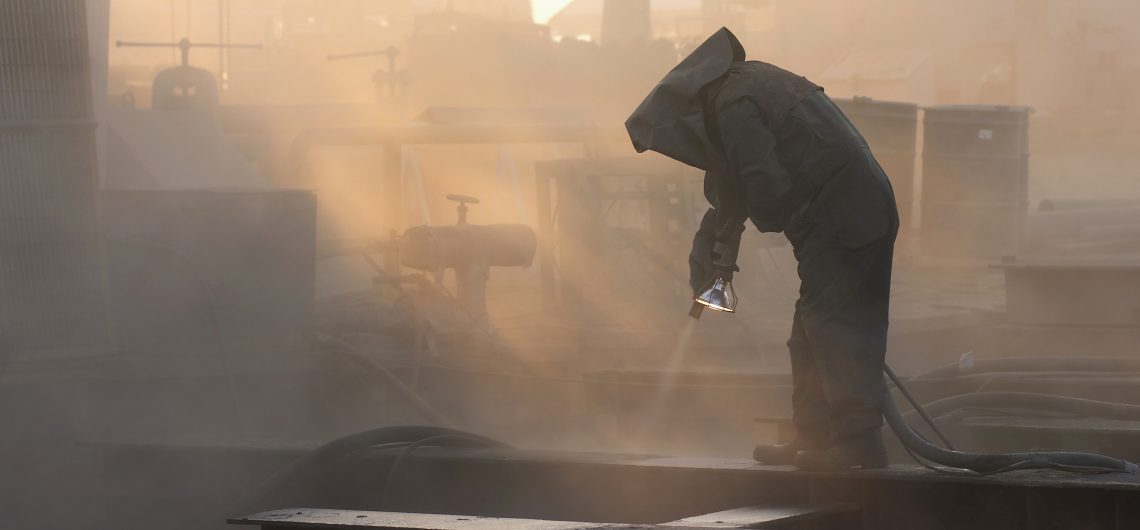
Crystalline silica dust poses a major health risk for workers across various industries. The Centers for Disease Control and Prevention reports that millions of workers in the United States are exposed to crystalline silica. Fine particles are released into the air when materials like granite, sand, bricks or cement release dust because of cutting, grinding and blasting.
Health organizations and workplace safety organizations are concerned about this exposure, especially because the particles are so small that they cannot be observed by the naked eye. When people inhale these particles, the particles lodge deep in lung tissue, which can lead to degenerative and fatal diseases. This has caused many experts to speculate that silica will become the next asbestos, which caused millions of people to develop deadly mesothelioma, asbestosis and other respiratory conditions.
Here is everything that you need to know about silica.
Where Silica Is Found
Silica is found in various materials, including:
- Granite
- Stone
- Concrete
- Rock
- Bricks
- Sand
- Gravel
- Clay
- Tiles
- Artificial and engineered stone
Silica is also formed when making products such as glass, pottery and ceramics. Respirable crystalline silica is very small particles 100 times smaller than typical sand found on beaches. It is formed when performing various work activities involving stone and other materials, including:
- Abrasive blasting with sand
- Sanding concrete walls
- Grinding mortar
- Manufacturing stone countertops
- Producing ceramic materials
- Sawing brick
- Crushing stone
Silica in the Workplace
Many of the activities that cause silica dust to form involve workplace activities. As workers perform these activities, they may inhale the microscopic particles, which then become lodged in their lungs. According to the Occupational Safety and Health Administration (OSHA), more than 2.3 million workers in the United States are exposed to silica while performing their jobs.
Workers’ compensation benefits are available to workers who are injured or develop an occupational disease within the scope of their employment.
Dangers of Silica Exposure
According to OSHA, workers who are exposed to silica particles are at an increased risk of developing the following silica-related diseases:
- Silicosis
- Lung disease
- Kidney disease
- Chronic obstructive pulmonary disease
Silicosis is an incurable lung disease like mesothelioma, which forms from asbestos exposure. Silicosis can lead to disability and death. The Centers for Disease Control and Prevention notes that silicosis is the illness most closely associated with occupational exposure to silica. Additionally, silica exposure is linked to pulmonary tuberculosis, airway diseases, the development of autoimmune disorders, chronic renal disease and other adverse health consequences.
Preventing Silica Exposure
Employers are tasked with the responsibility of establishing safe work environments for employees. Federal guidelines require the following:
Prevention Plans
In jobs where employees are exposed to silica dust, employers must follow these guidelines:
- Implement a written exposure control plan that identifies specific tasks that expose workers to silica and the methods that will be utilized to protect them. A competent person must be designated to implement this plan.
- Offer medical exams to employees who are required to wear a respirator for one month or more a year to occur every three years.
- Restrict housekeeping practices that expose workers to silica dust.
- Provide training to all workers exposed to silica dust on the health effects of exposure, tasks that may expose them to silica and methods to limit exposure.
- Keep records of silica exposure and worker medical exams.
Respiratory Protection
A dust mask is not sufficient respiratory protection to ward off the effects of silica exposure. Respiratory protection is a last line of defense when other dust control measures are insufficient. Employers are required to implement effective dust control methods to prevent the release of silica dust into the air. If these methods cannot fully control the silica dust, the amount of dust must be scientifically determined. When silica dust exposure is at or above 50 ug/m3 over an 8-hour workday, safety methods must be implemented. Employers must provide workers with respirators when exposure exceeds 50 ug/m3 over an 8-hour workday.
Control Methods
Employers should also implement methods to control the level of silica exposure, such as:
- Applying water to saw blades that cut materials
- Using tools equipped with an integrated water delivery system
- Installing local ventilation systems
- Using enclosures that isolate work processes
- Wet dust before sweeping or vacuuming it
- Keeping cafeterias in places away from silica dust
- Requiring employees to shower and change clothes before leaving the jobsite
What to Do If Exposed to Silica
If a worker is exposed to silica dust, he or she should seek medical treatment from an approved workers’ compensation doctor. He or she should also report exposure to the employer, along with doctor’s reports connecting the illness to workplace exposure. A workers’ compensation attorney can assist with the claims process and any appeals.
